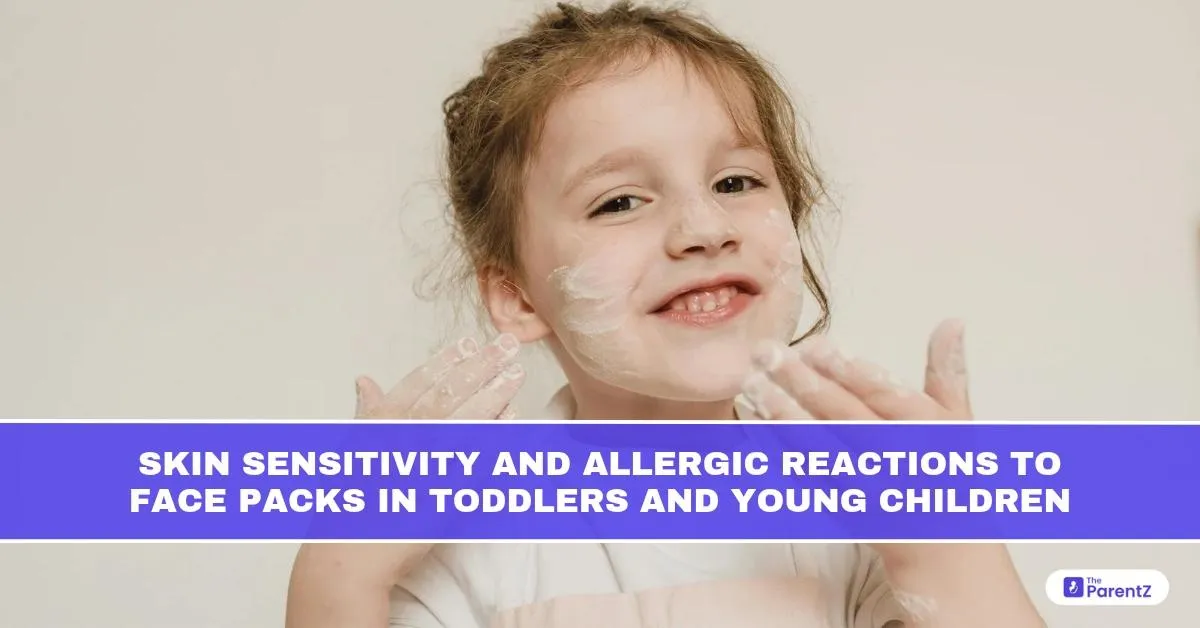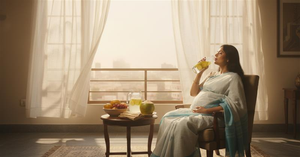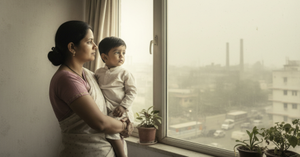The sight of a child with a face pack may seem harmless or even adorable during family spa days or festive grooming rituals. But when it comes to toddlers and young children, such beauty treatments can be risky and sometimes, harmful.
Children’s skin is not just a smaller version of adult skin. It is thinner, more porous, and far more reactive, making it highly sensitive to cosmetic ingredients that adults may tolerate easily. Even so-called “natural” or homemade face packs can cause redness, rashes, burning, or allergic reactions in little ones.
Why Children’s Skin Is So Sensitive
Children under the age of 6 have skin that is:
- Thinner: This makes it more permeable, allowing allergens and irritants to penetrate quickly.
- Underdeveloped skin barrier: Their skin’s protective layer (stratum corneum) is not fully matured, making it vulnerable.
- Reactive immune system: Their bodies are more likely to overreact to new substances, resulting in allergic responses.
- Higher surface area to body weight ratio: This makes them more sensitive to even small doses of topical substances.
These factors make toddlers and young children more susceptible to irritant and allergic contact dermatitis than adults.
Common Ingredients That Can Trigger Reactions
Even “natural” substances can act as allergens or irritants. Some commonly used ingredients in face packs that can harm young skin include:
- Turmeric (haldi) – Can cause redness, itching, or photosensitivity in sensitive skin
- Sandalwood powder (chandan) – May cause contact dermatitis in some children
- Multani mitti (Fuller’s Earth) – Absorbs moisture aggressively, causing excessive dryness
- Essential oils – Especially tea tree, lavender, and eucalyptus oils, which can burn or trigger allergic reactions
- Milk or curd – Though generally mild, can spoil quickly and harbor bacteria when not used fresh
- Gram flour (besan) – Can be abrasive on young skin and lead to microtears or irritation
Note: Even store-bought “kids’ skincare products” may contain fragrance, preservatives, parabens, or artificial colors, all of which are known skin sensitizers.
Signs of an Allergic or Irritant Reaction
Children may not be able to verbalize what they’re feeling, so it’s important to watch for early signs of a skin reaction:
- Redness or rash shortly after application
- Dry, scaly patches around the cheeks or forehead
- Itching, burning, or stinging sensations (may lead to constant scratching)
- Swelling of the face or eyes
- Blisters or hives (urticaria)
- Peeling or crusting of the skin
- Darkening of the skin post-inflammation (PIH – post-inflammatory hyperpigmentation)
First Aid and Treatment
If your child shows any signs of a skin reaction after applying a face pack, immediate, gentle care is essential.
1. Wash Off Thoroughly
Use lukewarm water to rinse the product completely. Avoid soap unless necessary.
2. Soothe the Skin
Apply a fragrance-free moisturizer or a mild emollient like petroleum jelly. Avoid anything medicated unless prescribed.
3. Avoid Scratching
Use cold compresses or calamine lotion (only under pediatric advice) to relieve itching.
4. Monitor for Spreading or Systemic Symptoms
If the rash spreads or if you see symptoms like difficulty breathing, fever, or lethargy, seek immediate medical care. This may be a severe allergic reaction.
5. Consult a Pediatrician or Dermatologist
For persistent redness, swelling, or skin damage, medical attention is necessary. Mild topical steroids or antihistamines may be recommended, but only under supervision.
Prevention: Better Safe Than Sorry
1. Avoid Face Packs Entirely for Toddlers
Children below the age of 6 should not be exposed to face packs even home remedies, unless medically recommended (e.g., oatmeal baths for eczema under guidance).
2. Patch Test Older Children
For children above 6, if you do use a mild skincare product, always do a 24-hour patch test on the forearm before applying it to the face.
3. Choose Products Carefully
Use dermatologist-tested, fragrance-free, hypoallergenic products formulated for children. Avoid products that promise fairness or glow.
4. Keep Skincare Simple
The best skincare for children is simple:
- A mild cleanser
- A gentle moisturizer
- Sunscreen (if going outdoors, and only if the child is 6+ months old)
5. Educate Family and Caregivers
Grandparents or extended family members may suggest traditional remedies with good intentions. Help them understand that baby skin is not the same as adult skin, and that some cultural practices may need to be adapted for safety.
Myth: Natural Means Safe
Many parents assume that natural ingredients are safe for children. However, natural does not mean hypoallergenic or child-safe. Allergies can occur with any substance, whether chemical or natural.
Turmeric, for example, is a known skin sensitizer. Multani mitti can over-dry the skin. Even milk can become a source of bacteria if not fresh or if left on too long. For toddlers, less is truly more.
When to Worry
Seek immediate medical attention if your child has:
- Facial swelling, especially around the eyes or lips
- Difficulty breathing or swallowing
- High fever following a skin reaction
- Pus-filled lesions or oozing sores
- Skin darkening that doesn’t fade over time
These may indicate a more serious allergic reaction or secondary skin infection that needs medical care.
Final Thoughts: A Child’s Skin Needs Love, Not Layers
A child’s skin is already perfect. It doesn’t need glow packs, brightening masks, or fairness creams. What it does need is gentle care, protection from harsh elements, and lots of hydration. Most importantly, children need to grow up in an environment where they are celebrated for who they are, not how they look.
Skincare is not about complexion. It’s about health. And in children, health begins with simplicity, safety, and informed choices.









Be the first one to comment on this story.